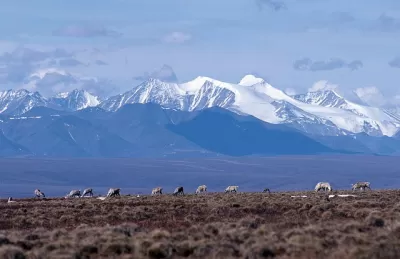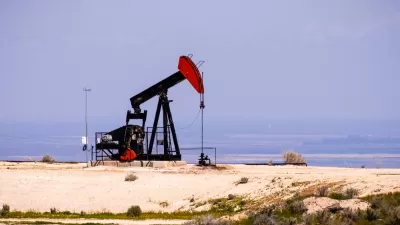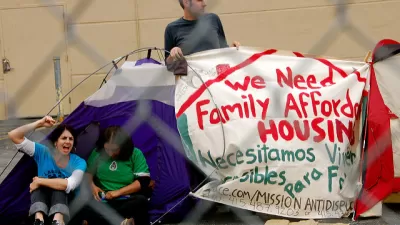When President Trump signs the tax-cutting bill, Sen. Lisa Murkowski (R-Alaska) will have achieved a family dream of opening up the pristine refuge, created 37 years ago, to drilling.

"The provision was added [to H.R. 1: Tax Cuts and Jobs Act] at the behest of Alaska’s senior senator, Lisa Murkowski, and, though it has nothing to do with tax policy and nearly had to be eliminated for parliamentary reasons, in the end it managed, stowaway-style, to cling to the legislation," reports Elizabeth Kolbert for The New Yorker on December 20, 2017.
H.R. 1 passed the Congress on Wednesday and was signed by President Trump on Friday, Dec. 22.
The 19.6-million-acre refuge Arctic National Wildlife Refuge (pronounced “an-war”) was created with the signing by President Jimmy Carter of the Alaska National Interest Lands Conservation Act on Dec. 2, 1980.
Development, including resource extraction, was prohibited in all but "1.5 million acres along the Arctic Ocean, east of Prudhoe Bay, known as the 10-02 area, were left in bureaucratic limbo, neither open to drilling nor off-limits to it," explains Kolbert.
The 10-02 may or may not contain a lot of oil—estimates range widely—but it is clearly the ecological heart of the refuge, the summer breeding ground for two hundred thousand caribou and millions of migratory birds.
Sen. Murkowski's "father, former Gov. and Sen. Frank Murkowski ... attempted to usher through the same legislation," reports Ashley Killough for CNN on Dec. 20. "The bill cleared both chambers of Congress in 1995, but it was vetoed by then-President Bill Clinton."
The tax bill offered Murkowski the opportunity to "take advantage of the 51-vote threshold opportunity, avoiding the 60-vote pitfall that has taken down ANWR in the past," adds Killough.
While the heated debate normally takes center stage in Washington around ANWR votes, the emotional clashing was somewhat overshadowed this time in part because it was attached to an arguably more controversial effort.
Will oil drilling proceed in ANWR?
"The tax package instructs the Interior Department to hold two lease sales in the next seven years," reports Dino Grandoni for The Washington Post on Dec. 21.
However, it is unlikely drilling would begin soon due to inevitable lawsuits and environmental reviews, report Ari Natter and Jennifer A. Dlouhy for Bloomberg News on Dec. 20.
"It’s still an open question about whether drilling will ever happen there," said Matt Lee-Ashley, a senior fellow at the Center for American Progress and former Interior Department official. "It’s hard to image that drilling will occur in the next 10 years -- or ever."
Murkowski also made the claim that revenues from oil drilling, which she estimated at $1 billion over ten years, would also help offset the tax cut. However, just how much oil is recoverable is questionable, reports Joel K. Bourne, Jr. for National Geographic on Dec. 19. And oil companies may not even be interested in drilling there, reports Justin Worland for TIME on Nov. 6.
FULL STORY: Will the Tax Bill Finally Defeat the Arctic National Wildlife Refuge?

Study: Maui’s Plan to Convert Vacation Rentals to Long-Term Housing Could Cause Nearly $1 Billion Economic Loss
The plan would reduce visitor accommodation by 25,% resulting in 1,900 jobs lost.

North Texas Transit Leaders Tout Benefits of TOD for Growing Region
At a summit focused on transit-oriented development, policymakers discussed how North Texas’ expanded light rail system can serve as a tool for economic growth.

Using Old Oil and Gas Wells for Green Energy Storage
Penn State researchers have found that repurposing abandoned oil and gas wells for geothermal-assisted compressed-air energy storage can boost efficiency, reduce environmental risks, and support clean energy and job transitions.

Private Donations Propel Early Restoration of Palisades Playground
Los Angeles has secured over $1.3 million in private funding to restore the Pacific Palisades playground months ahead of schedule, creating a modern, accessible space that supports community healing after recent wildfires.

From Blight to Benefit: Early Results From California’s Equitable Cleanup Program
The Equitable Community Revitalization Grant (ECRG) program is reshaping brownfield redevelopment by prioritizing projects in low-income and environmental justice communities, emphasizing equity, transparency, and community benefits.

Planting Relief: Tackling Las Vegas Heat One Tree at a Time
Nevada Plants, a Las Vegas-based nonprofit, is combating the city’s extreme urban heat by giving away trees to residents in underserved neighborhoods, promoting shade, sustainability, and community health.
Urban Design for Planners 1: Software Tools
This six-course series explores essential urban design concepts using open source software and equips planners with the tools they need to participate fully in the urban design process.
Planning for Universal Design
Learn the tools for implementing Universal Design in planning regulations.
Ascent Environmental
Borough of Carlisle
Institute for Housing and Urban Development Studies (IHS)
City of Grandview
Harvard GSD Executive Education
Toledo-Lucas County Plan Commissions
Salt Lake City
NYU Wagner Graduate School of Public Service





























